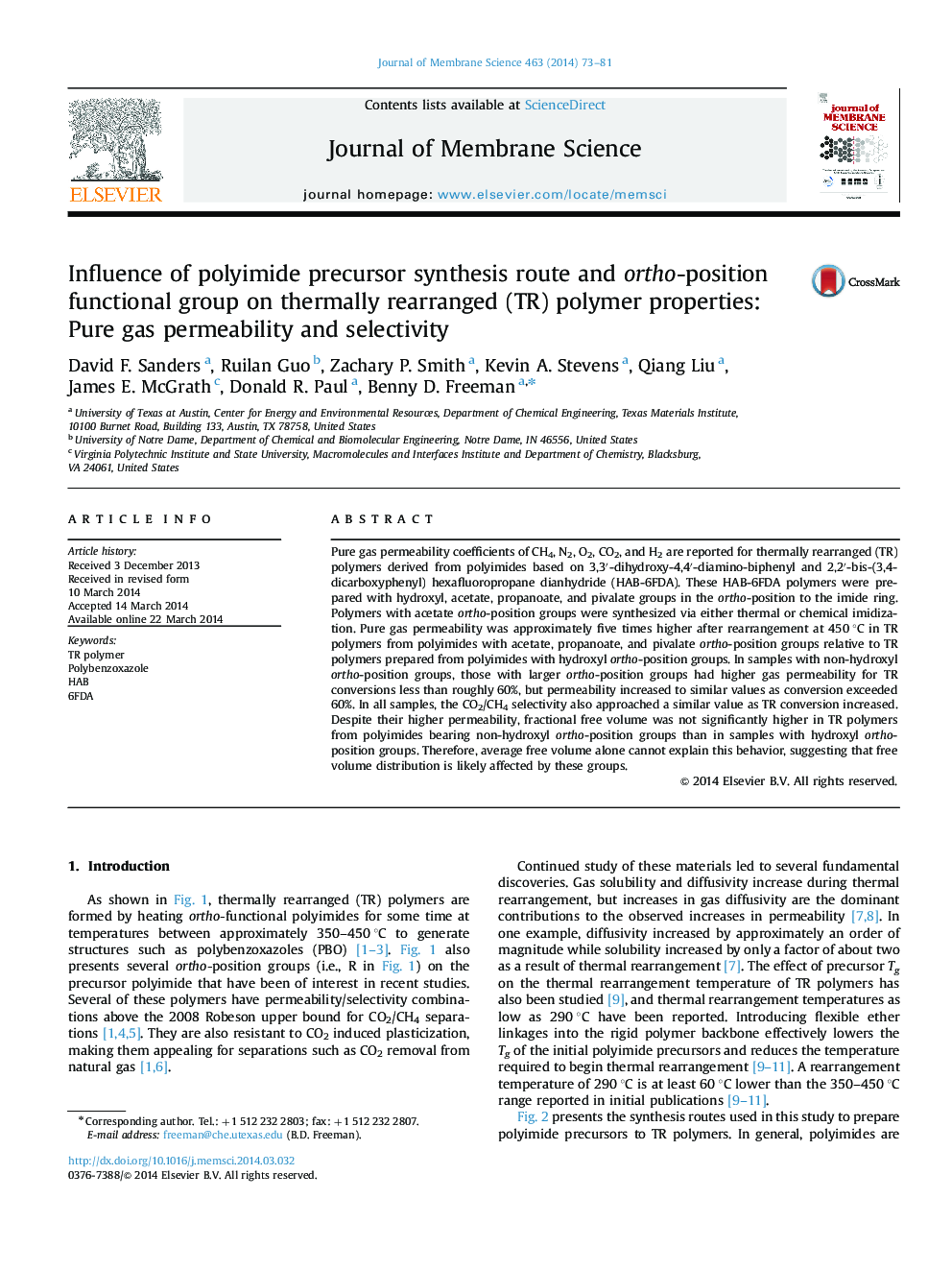| Article ID | Journal | Published Year | Pages | File Type |
|---|---|---|---|---|
| 633600 | Journal of Membrane Science | 2014 | 9 Pages |
Abstract
Pure gas permeability coefficients of CH4, N2, O2, CO2, and H2 are reported for thermally rearranged (TR) polymers derived from polyimides based on 3,3â²-dihydroxy-4,4â²-diamino-biphenyl and 2,2â²-bis-(3,4-dicarboxyphenyl) hexafluoropropane dianhydride (HAB-6FDA). These HAB-6FDA polymers were prepared with hydroxyl, acetate, propanoate, and pivalate groups in the ortho-position to the imide ring. Polymers with acetate ortho-position groups were synthesized via either thermal or chemical imidization. Pure gas permeability was approximately five times higher after rearrangement at 450 °C in TR polymers from polyimides with acetate, propanoate, and pivalate ortho-position groups relative to TR polymers prepared from polyimides with hydroxyl ortho-position groups. In samples with non-hydroxyl ortho-position groups, those with larger ortho-position groups had higher gas permeability for TR conversions less than roughly 60%, but permeability increased to similar values as conversion exceeded 60%. In all samples, the CO2/CH4 selectivity also approached a similar value as TR conversion increased. Despite their higher permeability, fractional free volume was not significantly higher in TR polymers from polyimides bearing non-hydroxyl ortho-position groups than in samples with hydroxyl ortho-position groups. Therefore, average free volume alone cannot explain this behavior, suggesting that free volume distribution is likely affected by these groups.
Keywords
Related Topics
Physical Sciences and Engineering
Chemical Engineering
Filtration and Separation
Authors
David F. Sanders, Ruilan Guo, Zachary P. Smith, Kevin A. Stevens, Qiang Liu, James E. McGrath, Donald R. Paul, Benny D. Freeman,
